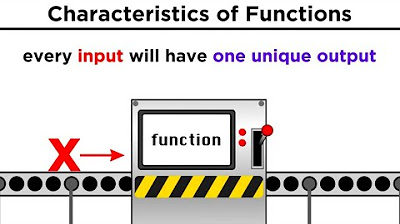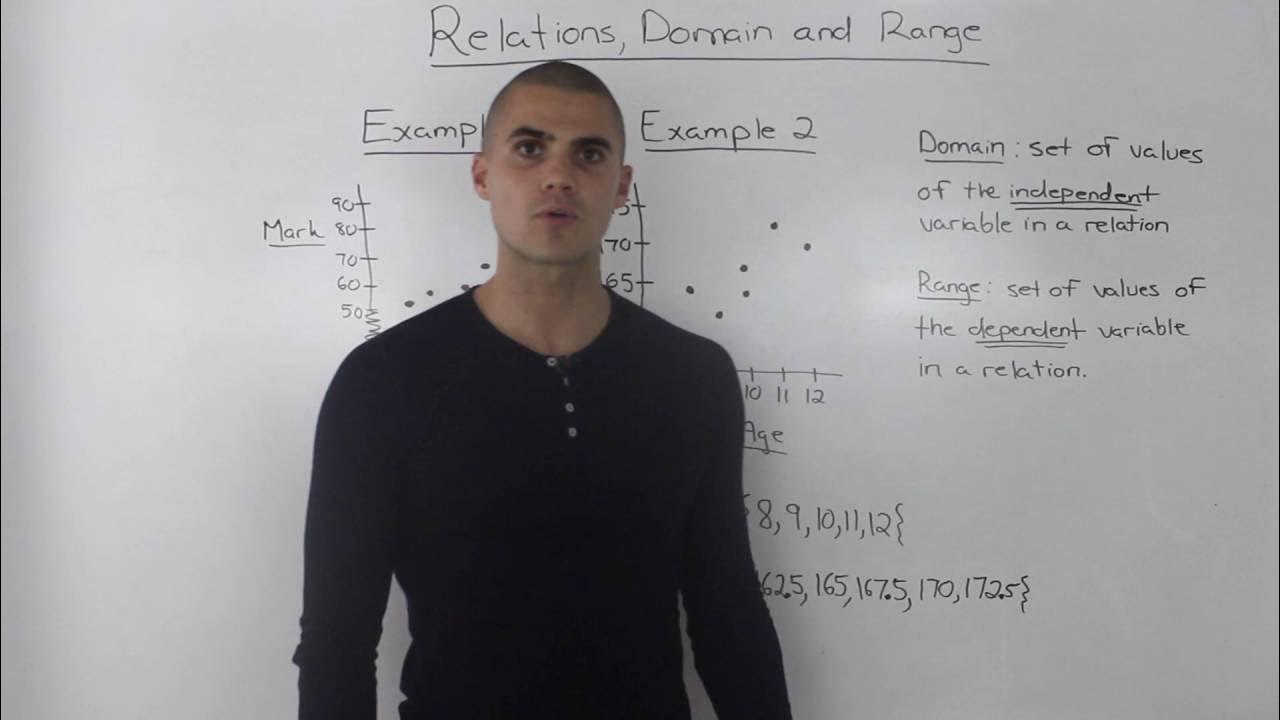REPRESENTATIONS OF AN INVERSE FUNCTIONS | General Mathematics | Quarter 1 - Module 13
Summary
TLDRIn this video lesson, Arvin Esenriquez introduces the concept of inverse functions, explaining how they can be represented using tables of values and graphs. He emphasizes the importance of ensuring that the original function is one-to-one for its inverse to be a valid function. Through a step-by-step guide, the lesson demonstrates how to compute inverse functions, swap domain and range, and plot both the original and inverse functions on a graph. The key takeaway is that the graphs of a function and its inverse are symmetric about the line y = x.
Takeaways
- 😀 The inverse function swaps the domain and range of the original function.
- 😀 The inverse function is denoted as f^(-1) and can be represented by swapping the x and y variables.
- 😀 A one-to-one function is required for its inverse to also be a function.
- 😀 If the original function is many-to-one, its inverse would not be a valid function.
- 😀 To check if a function is one-to-one, there should be no repetition of x or y values in the domain and range.
- 😀 The horizontal line test is used to check if a function is one-to-one.
- 😀 The graph of the inverse function can be obtained by reflecting the graph of the original function across the line y = x.
- 😀 For the example function f(x) = 2x + 3, the inverse is f^(-1)(x) = (x - 3)/2.
- 😀 To find the inverse, swap the x and y values and solve for y in terms of x.
- 😀 The graphs of a function and its inverse are symmetric to the line y = x.
Q & A
What is the main objective of the video lesson on inverse functions?
-The main objective of the video lesson is to help students represent an inverse function through its developed values and graph.
How is the inverse of a function defined?
-The inverse of a function is defined as a function with domain B and range A, where the domain and range of the original function are swapped. It is denoted by f raised to negative 1, or f^(-1).
Why is it important for a function to be one-to-one for its inverse to be a function?
-A function must be one-to-one because only one-to-one functions have an inverse that is also a function. If a function is many-to-one, its inverse would be one-to-many, which is not a valid function.
What tests should be applied to ensure a function is one-to-one?
-The horizontal line test should be used to verify that a function is one-to-one. Additionally, both the horizontal and vertical line tests must be satisfied for the function to be considered a one-to-one function.
How can you graph the inverse function of a one-to-one function?
-The graph of the inverse function can be obtained by reflecting the graph of the original function about the line y = x, which acts as a mirror.
What is the equation of the inverse function given f(x) = 2x + 3?
-The inverse function of f(x) = 2x + 3 is f^(-1)(x) = (x - 3) / 2.
How do you complete the table of values for the function f(x) = 2x + 3?
-To complete the table of values for f(x) = 2x + 3, substitute each given x value into the function, calculate the corresponding y values, and record them in the table.
What is the process to find the inverse function of a given function using a table of values?
-To find the inverse function using a table of values, swap the x and y values from the original function. Then, substitute these swapped values into the inverse function formula to calculate the new y values.
How does the graph of a function and its inverse function relate geometrically?
-The graph of a function and its inverse function are symmetric about the line y = x. This means that each point on the function has a corresponding point on the inverse, equidistant from the line y = x.
What is the significance of the line y = x in the context of inverse functions?
-The line y = x serves as a mirror line, reflecting the graph of a function to produce the graph of its inverse function. The graphs of a function and its inverse will be symmetric to this line.
Outlines

This section is available to paid users only. Please upgrade to access this part.
Upgrade NowMindmap

This section is available to paid users only. Please upgrade to access this part.
Upgrade NowKeywords

This section is available to paid users only. Please upgrade to access this part.
Upgrade NowHighlights

This section is available to paid users only. Please upgrade to access this part.
Upgrade NowTranscripts

This section is available to paid users only. Please upgrade to access this part.
Upgrade NowBrowse More Related Video

SHS General Mathematics Q1 Ep1: Function

Back to Algebra: What are Functions?

MCR3U (1.1) - Functions - relations, domain and range

Representations of Rational Function

Representing an Inverse Function Through Table of Values, and Graph | General Mathematics

Pengertian, Jenis, dan Grafik Fungsi Trigonometri (Matematika Peminatan Kelas XI BAB I Part I)
5.0 / 5 (0 votes)